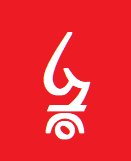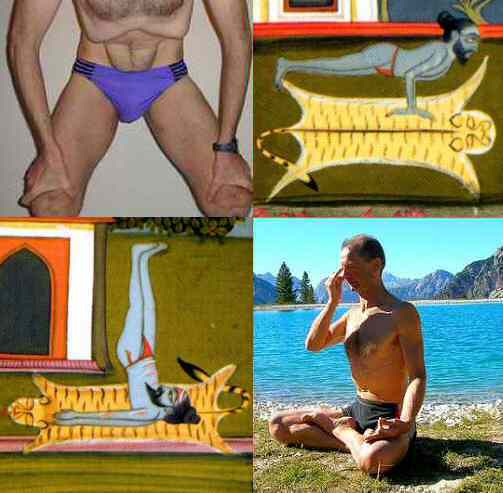|
Kapalabhati
Kapalabhati (, "Skull-polishing") is an important shatkarma, a purification in hatha yoga. The word kapalabhati is made up of two Sanskrit words: ''kapāla'' meaning "skull", and ''bhāti'' meaning "shining, illuminating". It is intended mainly for cleaning the sinuses but according to the ''Gheranda Samhita'' has magical curative effects. In the Jivamukti Yoga of David Life and Sharon Gannon, three forms of Kapalabhati are practised, derived from the ''Gheranda Samhita'' 1:54: * ''Vatakrama'', a practice similar to the pranayama technique of Bhastrika Bhastrikā is an important breath exercise in yoga and pranayama. It is sometimes treated as a kriya or 'cleansing action' along with kapalabhati to clear the airways in preparation for other pranayama techniques. Bhastrika involves a rapid and f ... or "Breath of Fire", except that exhalation is active while inhalation is passive, the opposite of normal breathing. * ''Vyutkrama'', a practice similar to Jala neti, it involves ... [...More Info...] [...Related Items...] OR: [Wikipedia] [Google] [Baidu] |
Kapalabhati - International Day Of Yoga Celebration - NCSM - Kolkata 2017-06-21 2472
Kapalabhati (, "Skull-polishing") is an important shatkarma, a purification in hatha yoga. The word kapalabhati is made up of two Sanskrit words: ''kapāla'' meaning "skull", and ''bhāti'' meaning "shining, illuminating". It is intended mainly for cleaning the sinuses but according to the ''Gheranda Samhita'' has magical curative effects. In the Jivamukti Yoga of David Life and Sharon Gannon, three forms of Kapalabhati are practised, derived from the ''Gheranda Samhita'' 1:54: * ''Vatakrama'', a practice similar to the pranayama technique of Bhastrika or "Breath of Fire", except that exhalation is active while inhalation is passive, the opposite of normal breathing. * ''Vyutkrama'', a practice similar to Jala neti, it involves sniffing water through the nostrils and letting it flow down into the mouth, and then spitting it out. * ''Shītkrama'', essentially the reverse of ''Vyutkrama'', in which water is taken through the mouth and expelled through the nose. See also * Kundali ... [...More Info...] [...Related Items...] OR: [Wikipedia] [Google] [Baidu] |
Shatkarma
The shatkarmas (Sanskrit: षटकर्म ''ṣaṭkarma'', literally ''six actions''), also known as shatkriyas,Shatkarmas - Cleansing Techniques in Yoga Magazine, a publication of are a set of purifications of the body, to prepare for the main work of yoga towards (liberation). These practices, outlined by |
Pranayama
Pranayama (Sanskrit: प्राणायाम, "Prāṇāyāma") is the yogic practice of focusing on breath. In classical yoga, the breath is associated with '' prana'', thus, pranayama is a means to elevate the ''prana-shakti'', or life energies. Pranayama is described in Hindu texts such as the ''Bhagavad Gita'' and the ''Yoga Sutras of Patanjali''. Later, in Hatha yoga texts, it meant the complete suspension of breathing. The pranayama practices in modern yoga as exercise differ from those of the Hatha yoga tradition, often using the breath in synchrony with movements. Etymology ''Prāṇāyāma'' (Devanagari: ') is a Sanskrit compound. It is defined variously by different authors. Macdonell gives the etymology as prana ('), breath, + ''āyāma'' and defines it as the suspension of breath. Monier-Williams defines the compound ' as "of the three 'breath-exercises' performed during (''See'' ', ', '". Monier-Williams, p706, left column./ref> This technical defi ... [...More Info...] [...Related Items...] OR: [Wikipedia] [Google] [Baidu] |
Bhastrika (Hatha Yoga)
Bhastrikā is an important breath exercise in yoga and pranayama. It is sometimes treated as a kriya or 'cleansing action' along with kapalabhati to clear the airways in preparation for other pranayama techniques. Bhastrika involves a rapid and forceful process of inhalation and exhalation powered by the movement of the diaphragm. The movement of air is accompanied by an audible sound. One inhale and exhale equals one round of bhastrika, and it may be repeated for many consecutive rounds. B. K. S. Iyengar explains that the similar "process or kriyā of ''kapālabhāti'' is a milder form of Bhastrikā Prāṇāyāma. Swami Sivananda describes the process: "inhale and exhale quickly ten times like the bellows of the blacksmith. Constantly dilate and contract. When you practise this Pranayama a hissing sound is produced. The practitioner should start with rapid expulsions of breath following one another in rapid succession. When the required number of expulsions, say ten for a round, i ... [...More Info...] [...Related Items...] OR: [Wikipedia] [Google] [Baidu] |
Tummo
In Tibetan Buddhism, ''tummo'' (; ) is the fierce goddess of heat and passion. Tummo is found in the Mahasiddha Krishnacarya and the '' Hevajra Tantra'' texts. Tummo is also a tantric practice for inner heat, developed around the concept of the female deity. It is found in the Six Dharmas of Naropa, Lamdre, Kalachakra, and Anuyoga teachings of Vajrayana. The purpose of tummo is to gain control over body processes during the completion stage of Anuyoga or Anuttarayoga Tantra ('highest yoga tantra'). The practice begins by visualizing the body's energy channels, winds, drops, and chakras. Inner heat, generated through specific breath-holding exercises, helps vital winds enter the central channel, leading to blissful experiences. The practice also involves focusing on seed syllables at the chakras and combining them with meditation on emptiness. Over time, practitioners aim to master this process, achieving heightened states of clarity, inner heat, and bliss. Scientifi ... [...More Info...] [...Related Items...] OR: [Wikipedia] [Google] [Baidu] |
Uddiyana Bandha
A bandha () is a kriyā in Hatha Yoga, being a kind of internal mudra described as a "body lock," to lock the vital energy into the body. ''Bandha'' literally means bond, fetter, or "catching hold of".Iyengar, 1976: pp.435–437Iyengar, 1976: p.525 ''Maha Bandha'' Mahā Bandha ("the great lock") combines all the other three bandhas, namely: * Mula Bandha, contraction of the perineum * Uddiyana bandha, contraction of the abdomen into the rib cage * Jalandhara Bandha, tucking the chin close to the chest In Ashtanga Yoga, these three Bandhas are considered to be one of the three key principles of yoga practice. ''Mula bandha'' ''Mūla bandha'' is a primary ''bandha'' in traditional yoga. The earliest textual mention of ''mūla bandha'' is in the 12th century Shaiva Natha text '' Gorakṣaśataka'' which defines it as a yogic technique to achieve mastery of breath and to awaken the goddess Kuṇḍalinī. Etymology Mula Bandha (Sanskrit: मूल बंध) is from ''Mūla'', ... [...More Info...] [...Related Items...] OR: [Wikipedia] [Google] [Baidu] |
Hatha Yoga
Hatha yoga (; Sanskrit हठयोग, International Alphabet of Sanskrit Transliteration, IAST: ''haṭhayoga'') is a branch of yoga that uses physical techniques to try to preserve and channel vital force or energy. The Sanskrit word हठ ''haṭha'' literally means "force", alluding to a system of physical techniques. Some hatha yoga style techniques can be traced back at least to the 1st-century CE, in texts such as the Hindu Itihasa, Sanskrit epics and Buddhism's Pali canon. The oldest dated text so far found to describe hatha yoga, the 11th-century ''Amritasiddhi, Amṛtasiddhi'', comes from a Tantra, tantric Buddhist milieu. The oldest texts to use the terminology of ''hatha'' are also Vajrayana Buddhist. Hindu hatha yoga texts appear from the 11th century onward. Some of the early hatha yoga texts (11th-13th c.) describe methods to raise and conserve bindu (vital force, that is, semen, and in women ''rajas –'' menstrual fluid). This was seen as the physical esse ... [...More Info...] [...Related Items...] OR: [Wikipedia] [Google] [Baidu] |
Gheranda Samhita
''Gheranda Samhita'' (IAST: gheraṇḍasaṁhitā, घेरंडसंहिता, meaning “Gheranda's collection”) is a Sanskrit text of Yoga in Hinduism. It is one of the three classic texts of hatha yoga (the other two being the '' Hatha Yoga Pradipika'' and the '' Shiva Samhita''), and one of the most encyclopedic treatises in yoga.B. Heimann (1937)Review: The Ǧheraṇda Saṁhitā. A Treatise on Haṭha Yoga by Śrīś Chandra Vasu The Journal of the Royal Asiatic Society of Great Britain and Ireland, Cambridge University Press, No. 2 (Apr., 1937), pp. 355-357 Fourteen manuscripts of the text are known, which were discovered in a region stretching from Bengal to Rajasthan. The first critical edition was published in 1933 by Adyar Library, and the second critical edition was published in 1978 by Digambarji and Ghote. Some of the Sanskrit manuscripts contain ungrammatical and incoherent verses, and some cite older Sanskrit texts. It is likely a late 17th-century te ... [...More Info...] [...Related Items...] OR: [Wikipedia] [Google] [Baidu] |
Bihar School Of Yoga
The Bihar School of Yoga is a modern school of yoga founded and developed by Sri Swami Satyananda Saraswati in Munger, Bihar, India, in 1963. The system of yoga taught at the school is recognized worldwide as Bihar Yoga or the Satyananda Yoga tradition. In 2019, the school was awarded the Prime Minister’s Award for Outstanding Contribution Towards Promotion and Development of Yoga. History Swami Satyananda inaugurated the Bihar School of Yoga (BSY) on 19 January 1964, Vasant Panchami, by lighting the akhanda jyoti (eternal flame) as a dedication to his guru, Swami Sivananda Saraswati. The school became a centre of Yoga training from the mid-1960s: Regular fifteen-day and one-month courses were conducted in Munger, as well as a six-month sadhana course and a nine-month International Teacher Training course in 1967. In 1968, to propagate the school's teachings, Swami Satyananda went on his first world tour to Malaysia, Singapore, Australia, Japan, USA, Canada, England, Fra ... [...More Info...] [...Related Items...] OR: [Wikipedia] [Google] [Baidu] |
Jivamukti Yoga
The Jivamukti Yoga method is a proprietary style of yoga created by David Life and Sharon Gannon in 1984. Jivamukti is a physical, ethical, and spiritual practice, combining a vigorous yoga as exercise, vinyasa-based physical style with adherence to five central tenets: shastra (scripture), bhakti (devotion), ahims ā (nonviolence, non-harming), nāda (music), and dhyana (meditation). It also emphasizes animal rights, veganism, environmentalism, and social activism. History Jivamukti Yoga was co-founded in New York in 1984 by dancer and musician Sharon Gannon and her partner, artist and cafe owner David Life. Gannon and Life met in 1982 in Manhattan. In 1986 they traveled together to India and took the Sivananda teacher training program and met Swami Nirmalananda. Upon their return, they opened the first Jivamukti Yoga Society in the East Village of New York City. In 1990 they began to practice Ashtanga Yoga with Pattabhi Jois in Mysore, India. In 1993, in upstate New ... [...More Info...] [...Related Items...] OR: [Wikipedia] [Google] [Baidu] |
Sharon Gannon
Sharon Gannon (born July 4, 1951 in Washington, D.C.) is a yoga as exercise, yoga teacher, animal rights advocate, musician, author, dancer and choreographer. Along with David Life, she is the co-founder of the Jivamukti Yoga method. Early life Gannon studied Dance at the University of Washington. She began studying yoga, meditation and bhakti practices in 1969. Her gurus are ShrBrahmananda Saraswati and Sri K. Pattabhi Jois. Through the grace o Shyamdas she was initiated into the Pushtimarg, Pustimarg Sampradaya throug [...More Info...] [...Related Items...] OR: [Wikipedia] [Google] [Baidu] |



